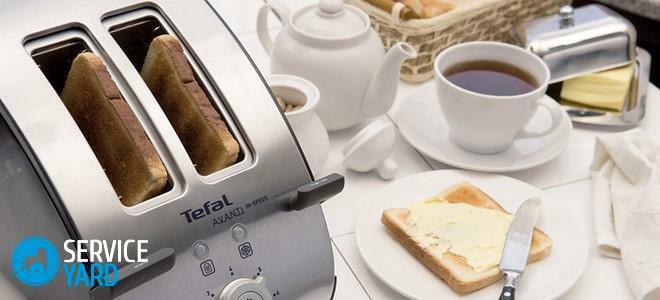The heating and air conditioning systems to variable environmental conditions is absolutely necessary adjustment of capacity existing plant. This allows you to maintain the desired temperature and save energy consumption during its operation. In automatic mode copes with this task thermostatic expansion valve. He controls the fluid flow in response to external changes in temperature.

Design and operation principle
In refrigeration and air conditioning uses a closed loop, which circulates the refrigerant changing its state of aggregation in the evaporator. The heating system heating is carried out during transfer of hot fluid to the thermocouples. Despite the development of a variety of alternative methods of heating and cooling, such circuit work is fundamental.
At low power device does not require constant adjustment to the external changes. The low-power cooling systems, the role of the regulator performs the throttle of the capillary tube. His work does not depend on the performance of the evaporators and is not able to change the level of refrigerant in the circuit.
The heating circuits are installed hand controls. They change the hot fluid stream is carried by turning the handle, the rising or sinking restrictive rod.

In systems where the constant adjustment to changing external conditions requires adjustment of the cooling or heating power by varying the working medium flow quantity.
The main regulator of the flow of force is the expansion valve, which means that thermostatic expansion valve. This unit is direct action. For his work does not require an outside power. The valve reacts to overheating of the vapor emerging from the evaporator. And he, in turn, depends on the load on the cooling system.
An additional advantage of the use of thermostatic valves is not critical systems to an exact amount of refrigerant filling.
The internal control device is shown.

The main elements of the expansion valve are:
- a membrane or diaphragm that controls the movement of the locking rod;
- capillary tube remote bulb, the transmitting device changes the vapor temperature at the evaporator outlet,
- control spring to adjust the setting level,
- inlet and outlet fitting.
The totality of the diaphragm, bulb and capillary tube is called a thermocouple. It was he who perceives the ambient temperature and regulates coolant flow.
The operating principle of the valve is the diaphragm moving under the action of three forces:
- medium pressure of the bulb,
- equalizing the pressure of the evaporator,
- the impact of the spring mechanism.
After attaining equilibrium between the three components of force diaphragm sets a desired amount of refrigerant flow.
Bulb pressure = equalizing pressure + spring pressure on the diaphragm.
When the temperature change and increase in thermal load in the evaporator is increased heating of the bulb and the pressure of its liquid filling. After the capillary tube is transmitted to the diaphragm, thereby opening the valve and an increase in refrigerant flow to the evaporator.
On a similar principle arranged and thermostatic radiator valve.

It performs the role of the bulb sensor (float) located in a cavity filled with a liquid or gas. When the temperature change is a decrease or increase in volume of the medium. As a result, the float changes its position, moving stock, which changes the passage of the valve section.
It is considered the most sensitive thermocouples, filled with gas. They respond to temperature changes more rapidly than the liquid. But they are more expensive.
Characteristics and types of thermostatic valves
When choosing a device, you must pay attention to the following parameters:
- The maximum temperature at which the valve is able to operate. It may reach 200 ° C.
- The pressure of the working medium. Typically in the range 16 - 40 bar.
- Material. The housing is made of bronze or brass. But the best anti-corrosion properties are stainless steel valves.
- Capacity expansion valve. This is the maximum flux transmitted fully open valve. It should match the capacity of the refrigeration unit.
- The diameter of the inlet and outlet fittings pipelines must match all of the controlled system.
Thermostatic valves for refrigeration and air conditioning available for each type of pressure equalization flow from the evaporator.
internal adjustment
Transfer pressure under the lower edge of the aperture is through Rout clearance around the stem. This type of valve is used only for single-filar evaporators with low hydraulic resistance.
refrigerant pressure on the membrane is carried out before it is fed into the evaporator.
external adjustment
In more sophisticated regulation system enters the pressure equalizing valve directly from the evaporator exit. For supplying this pressure in the housing, an additional input tubing provides flow of refrigerant from the evaporator under membrane thermoelement. Thus hypophrenic separate seal cavity isolated from the valve outlet pressure.

Such regulators are useful for operation at any methods of cooling and on different types of refrigerant. But they can not be used on the circuit with an internal adjustment. Tube under adjustment must necessarily be connected to the evaporator outlet. It can not be mute.
Methods for attaching the valve to the pipe system:
- via a threaded connection;
- through the flange;
- non-detachable welded joint.
Thermostatic valves of heating vary in shape depending on their location on the tube. Straight or axial cut into the flat area of the pipeline. Angle options are set in places of the pipe bend and change the direction of fluid movement.

mounting Features
Installation of thermostatic valves for heating and cooling should be considered separately, since the requirements and recommendations in these cases are different.
Installing the air conditioning system
A general view of the inclusion of the thermostatic device in the pipeline circuit refrigerating system shown in Fig.

When installing, observe the following rules:
- The valve is installed on the highway in the vicinity of the evaporator. The body portion with the diaphragm must be vertical.
- Place the bulb installation - as close as possible to the outlet of the evaporator. But it should only be installed in a horizontal pipeline. Location cylinder to the riser pipe will lead to malfunction of the thermostat, especially when starting the air conditioner.
- The bulb should fit snugly to the outlet conduit of the evaporator. Location - only the top tube, set under termoballon pipe or unacceptable side.
- Attaching to the pipe must be carried out by special clamp, the included temperature-controlled valve. Other methods do not provide a reliable contact, which eventually leads to distortion of the pressure transmitted to the valve thermocouple.
- For devices with external equalization of pressure is required to connect the equalizing pipe to the outlet of the evaporator. Retraction should be carried out from the top of the outlet pipe at a distance of not less than 100 mm from the bulb, and at the same distance from maslopodema loop.
If you can not install termoballon a horizontal pipeline, then allowed his mount to a vertical pipe. But the direction of the refrigerant must be from the top down, and the balloon is attached capillary tube up.
Setting the expansion valve in the heating mains
The main element is a centralized system heat radiator or convector. Most conveniently controlled hot fluid flow quantity in each device separately.

For reliable heat flow adjustment at each radiator, two devices are installed - on the inlet and outlet. The pipe systems, where the movement of the working environment of sequence elements necessary to install bypass. This bypass tube for the operation in the case of line clogging or overlapping one of the radiators.
Installation errors and faults
The main problems arise in the expansion valve due to incorrect installation location of the valve or bulb. The accuracy of adjustment can influence and minor factors in securing elements of the device.

One common problem is the inaccurate transfer of the desired pressure at the remote bulb thermocouple. This may be due to its poor contact with the outlet pipe of the evaporator. The location must be carefully cleaned and covered with heat conducting paste. Termoballon not be placed on the welds connecting pipe.
The sensor itself must be isolated to the ambient air is not affected by its temperature.
Total yield of the expansion valve often occurs due to the application of internal models of plastic components.



